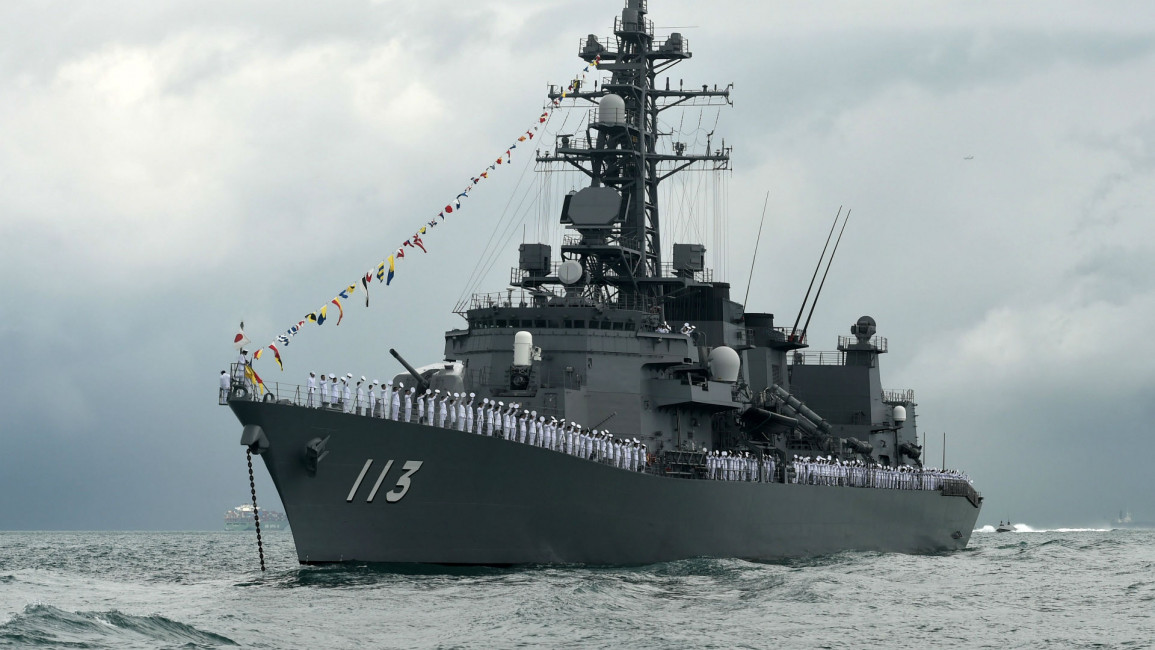Japan destroyer heads to Middle East as Iran-US tension lingers
The vessel left the Yokosuka naval base, south of Tokyo, for an information gathering mission in the Gulf of Oman, northern parts of the Arabian Sea and parts of the Gulf of Aden.
Japan earlier decided not to take part in the US-led Operation Sentinel to protect shipping routes in the region.
"Securing safety of vessels related to Japan is an important duty of the government," Prime Minister Shinzo Abe told the crew members of the 4,650-ton ship - the Takanami - as it readied to leave port.
Energy-poor Japan has traditionally enjoyed warm ties with Middle Eastern countries, including Iran, as the world's third largest economy relies heavily on energy from the resource-rich region.
Abe has held a series of meetings with Middle Eastern leaders over the last year, including Iran's Supreme Leader Ayatollah Ali Khamenei and President Hassan Rouhani, in an attempt to calm the soaring tension between Washington and Tehran.
The naval destroyer will join two Japanese surveillance patrol airplanes that have been operating in the region as part of the same mission.
Japan's mission comes at a time of heightened tensions in the region after the US killed Qasem Soleimani, commander of the foreign operations arms for Iran's Revolutionary Guards Corps.
Iran later retaliated by firing a volley of ballistic missiles at Iraqi bases hosting US troops, injuring dozens of personnel.
The US blames Iran for planting mines that exploded against tankers last year near the Strait of Hormuz, the narrow mouth of the Persian Gulf through which 20 percent of all oil passes.
Twitter Post
|
Iran denied being involved, though it did seize oil tankers and shoot down a US military surveillance drone around that time.
Tehran is also accused of executing a drone and missile attacks on two key oil facilities run by Saudi state oil giant Aramco in September last year.
Last week, a vessel in the Persian Gulf caught fire, prompting a warning from British naval officials to "exercise extreme caution" amid fears of a renewal of last year's tanker attacks in the flashpoint region.
The United Kingdom's Maritime Trade Operations said the fire struck a vessel northwest of Sharjah, an Emirati sheikhdom. It offered no further information about the vessel.
An unverified video shared on social media showed a pillar of smoke ascending from a vessel purported to be an oil tanker off the coast of Sharjah. Later posts identified the vessel as a Norwegian heavy load carrier.
Officials with the US military similarly said they knew of the fire, but had no further information.
The UAE did not immediately acknowledge the fire and officials did not respond to requests for comment.
The blaze prompted speculation on social media of renewed attacks on oil vessels in the Persian Gulf, mirroring last year's repeated sabotage attacks on tankers as tensions between Washington and Tehran soared.
There is no evidence pointing to a sabotage incident at this point in time.



